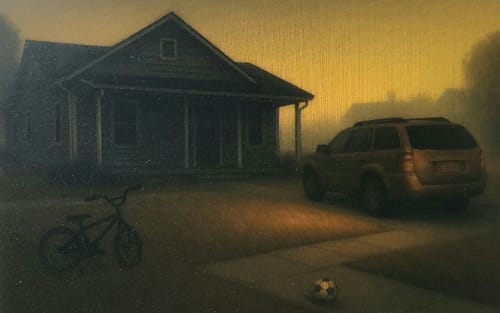Part 1 — When the Lights Go Out Next Door
It began with shrieking.
Not laughter or squeals from tag in the yard, but high, piercing screams from children, echoing off vinyl siding and white fences. Neighbors stepped out onto porches. Some dropped garden tools. Others froze.
Moments before, the street had been filled with the gentle hum of summer: two families, one American, one immigrant, sharing a backyard. The kids tossed a soccer ball between yards, their laughter tumbling like loose marbles on the breeze. One of the immigrant children, Mateo, had a medical kit clipped to his belt. He is diabetic and his mom is always nearby.
Then: several black SUVs screeched onto the block. Doors flung open. Black-clad, masked men with weapons drawn flooded the front yard. They didn’t knock. They didn’t announce themselves. They burst through the front door.
Within seconds, the immigrant parents were marched out of the house, wrists restrained, faces pale with confusion and fear. Two of the armed men grabbed the children, Mateo and his older sister, and carried them, screaming and kicking, to a separate vehicle. The doors slammed. The convoy peeled away. Dust, silence, and shock remained.
No explanations. No one told the neighbors where the children were taken or whether Mateo had his insulin.
It wasn’t a movie. It wasn’t a nightmare. It happened in broad daylight, next to swing sets and barbecue grills and wind chimes.
At first, no one spoke. Not the kids who saw their best friends snatched away. Not the parents who didn’t know how to explain it. Not the teachers who showed up the next morning to find empty desks.
But shock soon gave way to fury.
“They were our friends,” Emily said, voice trembling in the living room packed with neighbors. “They went through the process. They worked. They paid taxes. They applied for citizenship. And they were still taken like criminals. Like they were nothing.”
Her husband, usually quiet, added, “If this can happen to the family next door, what does that say about the rest of us?”
A candlelight vigil bloomed outside their house the next night. Chalk messages lined the sidewalk: We miss you. Come home soon. Where are the children?
The town changed.
People organized. Local news picked up the story. Churches offered sanctuary. The school board passed a motion requiring legal review before law enforcement could access school records. And one neighbor who had never spoken up before, wrote her first letter to Congress.
This isn’t just about one family. It’s about the quiet power of proximity, of seeing the unimaginable with your own eyes and refusing to look away.
Because when the lights go out next door and black cars take away your neighbors, the question isn’t how it happened.
It’s what you’ll do now.
Did you ever think this couldn’t happen on your block? What if it already has? Share this story. Talk to your school board, your town or city council, your faith leaders. When families are taken in silence, we must answer with solidarity.
Coming Next: When They Were Taken
What happened on this street isn’t isolated. In towns and cities across the U.S., immigrant families are pulled from homes, schools, and workplaces without warning. In Part 2, I’ll tell the real stories behind the statistics and the neighbors who refused to let them vanish quietly.
About this Series:
“The House Next Door — Echoes Across America” explores the disappearances of immigrant families who followed the rules and the communities they leave behind. Through intimate storytelling and real-world accounts, this series reveals how the consequences of detention and deportation ripple through neighborhoods, schools, and hearts and how everyday people choose to respond. It’s about grief, awakening, and the courage to stand up when the house next door goes silent.
Resources for Immigrant Support: Legal Aid, Community Services, and Where to Give
